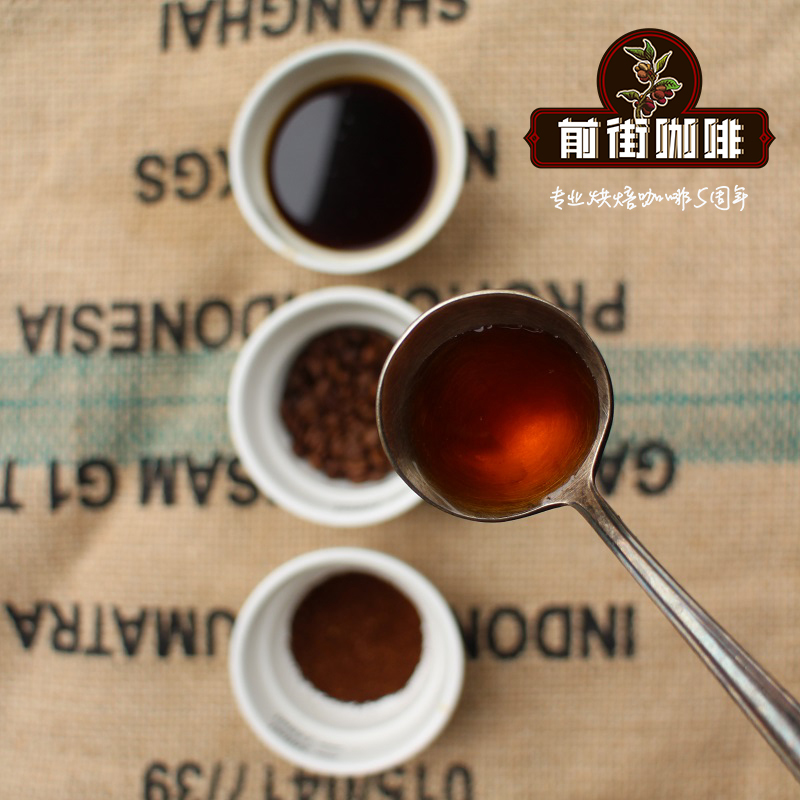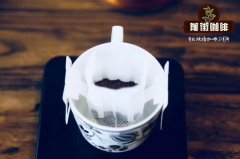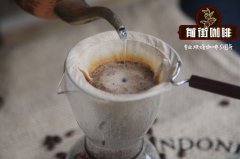The production process and change process of coffee bean roasting Starbucks coffee making method is explained in detail.

Professional coffee knowledge exchange more coffee bean information please follow the coffee workshop (Wechat official account cafe_style)
How to drink authentic and delicious coffee is concerned by many friends who like to drink coffee. Coffee, the most important is the roasting, what kind of roasting process determines the taste of coffee, professional coffee roasting is mainly divided into which stages? In the process of coffee making and roasting, the transformation of ingredients is very complex. After all, coffee beans are organic matter, so the transformation of this component is very complex and can not be fully understood with modern organic chemistry knowledge.
1. Raw bean processing:
1. Picking
It is divided into mechanical picking and manual picking. Mechanical picking is suitable for coffee gardens with flat land and large areas of planting. Brazil is the most frequent user of mechanical picking coffee in the world. This method is characterized by low cost and high efficiency, but the coffee beans picked are uneven and of poor quality. For coffee beans with higher quality requirements, the method of manual picking is generally adopted, which ensures that the picked coffee fruit has uniform size, similar maturity, no other impurities, and is beneficial to the post-processing of coffee beans.
2. From fruit to coffee beans:
The processing methods from coffee fruit to coffee beans can be roughly classified as dry processing and wet processing, as well as dense processing.
Dry processing (solarization): the coffee fruit is dried and dehydrated by natural conditions such as sunlight and ventilation, and then the dried coffee fruit is shelled to remove pulp, peel and silver peel. This method is the most economical and traditional processing method, the coffee beans treated by this method can maintain the fragrance for a long time, but also have a certain environmental smell. At present, this method is widely used in many parts of Africa and Asian countries, but with the progress of science and technology, many places have begun to use dryers to dry coffee fruit.
Wet processing (washing): also known as washing processing, the coffee fruit is screened by soaking, and then the selected fruit is fermented and squeezed to remove the sticky pulp on the surface of the peel, pulp and silver skin. the processed coffee beans will retain the silver skin on the surface for storage, and the coffee beans in this state are called "parchment coffee beans" (Parchment Coffee). Wait until before the exit to remove the dried silver skin with a peeling machine. The biggest advantage of wet processing is that the appearance quality of coffee beans is good, and the original flavor is maintained well. The disadvantage is that the processing cost is high and a lot of water is needed. It is generally used for the processing of high quality coffee beans.
Honey treatment: honey treatment, called HoneyProcess or MielProcess, is the method of peeling off the pulp and drying the fruit with endocarp.
Transport
Before starting baking
First of all, we have to pick raw beans before we start baking-the selection of raw beans is also very important, and defective beans will affect the flavor of the coffee.
We need to pick out all black beans / partial black beans, sour beans / local sour beans, mold-damaged beans, moth-eaten beans, immature beans, withered beans, shell beans, broken beans, and other foreign objects (non-coffee impurities, including branches, stones, copper, etc.).
Coffee roasting is a science, the age, density, hardness and moisture content of raw beans will affect the quality of roasted coffee; even the relative humidity and temperature on the day of roasting can not be ignored. Roasting is the direct heating of the roast without oil, water, salt or sugar.
Color change of coffee beans during roasting
1. Raw beans 0:00-75 f [23 degrees Celsius]
two。 Start whitening 4:00-270F [132C]
In the steaming stage, this is the most important process of the endothermic reaction of coffee beans, at this stage, the beans will slowly expand, the color will change from green to white, and the moisture will slowly evaporate from the bean heart because of the heat absorption of the beans. Coffee aroma found that whether the coffee tastes good or not depends on this stage, when the water evaporates too quickly, it is easy to cause the bean heart to be unripe, the bean is easy to be bitter, and when the water evaporates too slowly. It will cause the coffee to be insipid and not rich in aroma. Therefore, we insist that the steaming process must not be omitted, and we should also use this process to make the coffee more fragrant, stronger and tastier.
3. Early yellowing 6:00-327f [164C]
At this time, the coffee is still losing moisture in the form of evaporation without physical expansion. The hot air roaster can reach this stage earlier. Because the hot air can effectively exchange heat and take away the steam. The coffee at this time has a moist grass flavor. All the warm-up stages before an explosion are endothermic reactions. Coffee beans absorb heat from the environment and accumulate energy for the upcoming audible baking reaction. )
4. Brown stage 6:30-345F [174C]
At this time, the coffee beans began to appear brown. Marbling appears on the surface, but it still does not expand. You can smell the slightly damp smell of roasted wheat. Some varieties of colors will appear brighter at this stage. Such as Costa Rica and Mexico.
5 light brown stage 8:00-370F [188C]
At this time, as the explosion approached, some beans swelled slightly and the midline opened. So that the silver skin attached to the midline begins to fall off.
6. Brown stage 9:00-393f [200C]
Now we have arrived at the door of the explosion. Coffee beans turn brown rapidly in a short period of time, which is partly due to the caramel reaction, but more importantly, the "Medra reaction" (which is also why the steak turns red)
7. The first explosion starts at 9:20-401f [205C]
At this time, we can hear sporadic popcorn-like popping sound, which is obviously different from the dense and intense second popping sound. Again, the temperature indication is only that there is a big difference between the ambient temperature and the actual temperature in the coffee bean, and the temperature in the bean is 356 degrees Fahrenheit measured by a more complex method.
8. An explosion is in progress at 10:00-415F [213C]
When an explosion is in progress, the surface color of the coffee still appears mottled and uneven. The burst of the bean body leads to the expansion of the coffee bean, the steam escapes from the inside of the bean, and the midline is fully opened, so that the remaining silver skin falls off completely. Because an explosion is an exothermic reaction, it will cause the beans to cool down. But it soon turns into an endothermic reaction, which means that if the roaster fails to supply heat in time, baking will stagnate at this point. This is not a good thing. Once the caramel reaction begins (340 degrees Fahrenheit in the bean), the temperature loss will produce a bitter "roasting" taste, which may be caused by the interruption of the long-chain polymerization. The melting point of sucrose is 370 degrees Fahrenheit, which is exactly the same as the coking reaction temperature indicated here.
9. The end of one explosion is 10:40-426f [219C]
This stage is called urban baking, and the surface of swollen beans becomes smoother. But there are still dark marks like fine depictions. Here, the escape of water vapor and carbon dioxide is the main cause of soybean expansion.
10. City Baking + 11:05 435F [224C]
The stage between the first explosion and the second explosion is a short endothermic period. when the temperature reaches a certain temperature, the wood fiber matrix structure of the coffee bean itself begins to break, and the second explosion begins. It can be observed that the color darkens rapidly in a very short period of time, while the temperature change is not obvious compared with the previous stage.
11. Deep city baking 11:30-444f is on the verge of a second explosion [229C]
The picture shows the lighter depth of city baking. At this time, the coffee is on the edge of a second explosion. The temperature inside the second explosion is usually about 446 degrees Fahrenheit. In fact, the second explosion is more difficult to predict than the first explosion. Why? In my experience, this is because the first explosion is caused by the escape of water vapor and carbon dioxide, which leads to the physical expansion of the bean, while the second explosion is the process of physical fracture of the fiber structure. The size and density of coffee are different in different producing areas, different varieties and different elevations. It is conceivable that their fiber structures are also different, and orderly wood fibers are more likely to react than disordered wood fibers.
twelve。 Deep city baking + 11:50-454f second explosion begins [234.5 degrees Celsius]
The picture shows heavy roasting in the deep city, when the coffee beans have almost entered the second explosion. The baking ends 10 seconds after hearing the second explosion, and we can easily see a more significant difference by comparing it with the full picture of baking in the deep city. But a more reliable way is to judge by sound.
13. Vienna-shallow French baking 12:15-465f second explosion in progress [240.5 degrees Celsius]
Vienna (European)-shallow French roasting is the beginning when the original characteristics of coffee are overshadowed by roasting characteristics, and if you are buying coffee for different flavors, heavy roasting may not be suitable for you. There are exceptions, however, and some coffees may perform quite well at this stage.
To be clear: Espresso is not a kind of baking, but the northern Italian style espresso is often baked to an internal temperature of 440 Murray 446 degrees, while southern Italian is generally equivalent to shallow French baking or deeper.
14. Deep French baking 12:40-474f second explosion is nearing the end [245.6 degrees Celsius]
The sugar is highly caramelized (it looks as if it was charred) and decomposed at the same time. The wood structure in the bean begins to carbonize, and the volume continues to grow, but the weight becomes lighter and lighter. The aromatic compounds, oils and soluble substances in beans begin to burn and become the smoke that fills your room. My limit is 465 degrees Fahrenheit
15. Full carbonization 13:00-486F [252C]
Some people call it Italian or Spanish, insulting these two baking modes. At this stage, more than 25% of the coffee beans have been reduced to ashes. The rest are carbonized, dead, charred beans.
16. Internal combustion 13:30-497f [258C]
At this time, the beans are on the edge of burning. in fact, if the amount of baking is large enough, an adequate supply of oxygen will cause the flame to ignite at the moment of the beans. If it is a 2murmur3 bag large roaster, please contact your local fire department before trying 497 degrees.
Important Notice :
前街咖啡 FrontStreet Coffee has moved to new addredd:
FrontStreet Coffee Address: 315,Donghua East Road,GuangZhou
Tel:020 38364473
- Prev

Introduction to the simple method of making coffee beans what are the methods of making coffee?
Professional coffee knowledge exchange more coffee bean information Please pay attention to the coffee workshop (Wechat official account cafe_style) Coffee is harvested in different places, mainly divided into hand picking method and shaking method. The harvest season is from September of each year to January of the following year. The process of removing impurities from the harvested fruit and turning it into raw beans is called refining. The following is the general coffee-making process
- Next

Introduction to the production formula and technology of decaf coffee the production method of Starbucks decaf coffee
Professional coffee knowledge exchange more coffee bean information Please follow the coffee workshop (Wechat official account cafe_style) in recent years the problem with caffeine is not fine coffee, but energy drinks (energy drinks) made with large amounts of sugar, taurine (taurine) and caffeine. At that time, the Daily Mail reported this month that a 19-year-old athlete was applying for the examination.
Related
- Beginners will see the "Coffee pull flower" guide!
- What is the difference between ice blog purified milk and ordinary milk coffee?
- Why is the Philippines the largest producer of crops in Liberia?
- For coffee extraction, should the fine powder be retained?
- How does extracted espresso fill pressed powder? How much strength does it take to press the powder?
- How to make jasmine cold extract coffee? Is the jasmine + latte good?
- Will this little toy really make the coffee taste better? How does Lily Drip affect coffee extraction?
- Will the action of slapping the filter cup also affect coffee extraction?
- What's the difference between powder-to-water ratio and powder-to-liquid ratio?
- What is the Ethiopian local species? What does it have to do with Heirloom native species?

